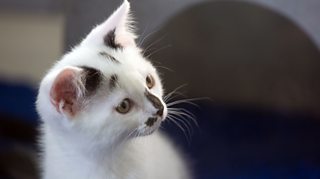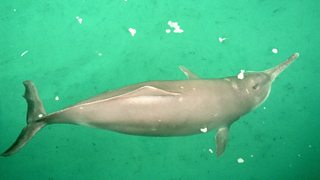Should we be doing a whole lot more... nothing?
Turning to the animal kingdom can sometimes help us to answer some of life's big questions. In ΒιΆΉΤΌΕΔ Radio 4's Naturebang, presenters Becky Ripley and Emily Knight look to the natural world to learn more about what it means to be human.
"We've created a society where we fear boredom and we're afraid of doing nothing," says psychology lecturer Dr Sandi Mann. But in trying to avoid boredom, we miss out on its benefits. When we're bored, we daydream, and that has been linked to creativity.
So can copying lazy ants help us find our inner creativity? And do North American wood frogs hold the secret to successfully freezing human organs? And why are some sounds more frightening than others?
Most animals spend a lot of their time doing nothing
The natural world seems like a busy place. But the truth is, most animals spend most of the time doing absolutely nothing at all.
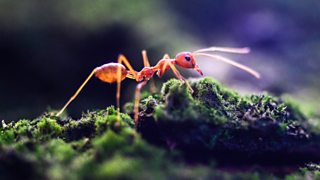
It's not just the sleepy sloths and cat-napping cats. Even scurrying critters have an astonishing amount of down-time. Behavioural ecologist Professor Dan Charbonneau says although ants have a reputation for being industrious, the truth is more surprising: "If you look at a colony of ants, or bees, or any social insect really, maybe a little bit less than half of them are just standing around doing what looks like nothing." So, what lessons can we take from these lazy ants?
"We've created a society where we fear boredom and we're afraid of doing nothing," says psychology lecturer Dr Sandi Mann. But in trying to avoid boredom, we miss out on its benefits. When we're bored, we daydream, and that has been linked to creativity.
The parts of our brain that allow us to do this mind wandering are what neurologists call The Default Mode Network. And it only lights up when we stop doing everything else. Sandi's advice? Just sit and watch the clouds. "Those natural opportunities to let your mind wander are all around us if we can just put our phones away long enough to take advantage of them."
How can scurrying ants help us to slow down? Listen to the full episode here.
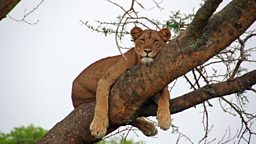
Does giving rights to rivers and forests make us more empathetic to them?
The Whanganui River in New Zealand is hugely important to the indigenous Whanganui people. It is entrenched in their history and community and "viewed as an ancestor," says Dr RΔwiri Tinirau, an advisor on MΔori human rights. They even have a proverb: "I am the river and the river is me."
The Amazon rainforest, one of the Great Lakes in the US and River Ganges in India all have legal personhood, where Mother Earth is recognised as a legal person.
When the river came under threat through colonisation and industry, the Whanganui people launched a legal battle and eventually became custodians of the river. Now, the body of water is officially recognised as a legal person, which means that any decisions have to be discussed with the river itself, via its legal representatives. "Two people act as the face and voice of the river," explains RΔwiri.
Similarly, the Amazon rainforest in Columbia, one of the Great Lakes in the US, and the River Ganges in India all have legal personhood, as does land in Ecuador and Bolivia, where Mother Earth is recognised as a legal person.
"Personhood given to a forest or a tree gives it that status in law where it can have rights in its own interest," explains Anna Grear, Professor of Law and Theory at Cardiff University. This could be the right for life or the right to flourish. It requires us to think about what is best for the natural world, not what is best for us as humans.
We are increasingly learning that we have a responsibility to nature, but can our empathy evolve? "To think about things as beings, there's a possibility there – not an inevitability but a possibility – of empathy. And that's the important thing," says Anna.
Learn more about the communities interconnection to the river by listening here.
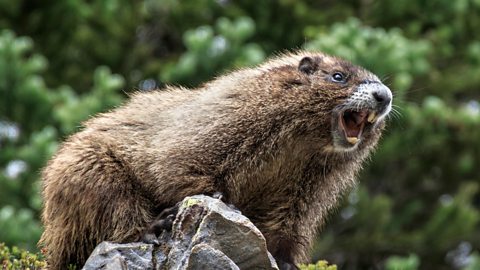
Why do certain sounds induce fear in us?
Film composer Mark Korven on how he is inspired by animal screams and other noises.
Why do we find the sound of screams frightening?
Surprisingly, listening to a decidedly un-scary animal – the marmot – may hold the answer. Daniel Blumstein is a professor of ecology and evolutionary biology. He studies marmots in the Rocky Mountains, particularly their anti-predator behaviour and the squeaky alarm calls they make when danger is nearby. But, as he discovered when he was holding a baby marmot, they also make a more visceral noise when in close contact with the enemy: they scream. "I had an emotional response and I almost dropped it," he recounts.
Screams are produced when marmots force air across their vocal chords too fast. The sounds not only come from fear, but can cause it too.Professor Daniel Blumstein
Dan began looking into what makes animal screams so scary. They are produced when animals are "overblowing their vocal production system," he says. When they force air across their vocal chords too fast, the system goes into its non-linear, chaotic phase. "These non-linear sounds are highly evocative to us and other animals." Not only do these sounds come from fear – they can cause it too.
Horror films are full of these scratchy, raspy, non-linear sounds. They all mimic what's naturally found in an animal's "overblown system." Turns out you don’t need to watch The Shining or a jump scare to get shivers down the spine – just listen to a baby marmot scream.
Listen to the full episode here and find out why are some sounds so fear inducing.
What can we learn about culture from great tits?
We think of "culture" as being unique to humans. But, like us, animals have habits and traditions that are passed down from one generation to the next. This might be learning to crack nuts with tools, or memorising a migration route by following the flock.
Michael Chimento, researcher at the Max Planck Institute of Animal Behaviour, studies animal culture in great tits. An experiment, where the birds had to extract a mealworm out of a puzzle-box, showed that old habits die hard. When the method of extraction was changed by the scientists, the birds still hammered away with their old tactic – even if it meant no lunch.
The one thing that seemed to bring back innovative thinking was the arrival of new birds, who weren't beholden to the prevailing culture. In the human world, an influx of immigrants can have a profound effect on the prevailing culture, often bringing new ways of thinking, novel cuisines and exciting innovations. "Moving around, going to new places – that's the most likely way people change their minds", says Michael.
Delve into the conflict between tradition and innovation by listening to the full episode here.
Can we freeze ourselves to time travel to a future world, like a wood frog?
North American wood frogs spend the winter frozen, at around -18°C, for sometimes up to seven months. How do they survive being frozen solid?
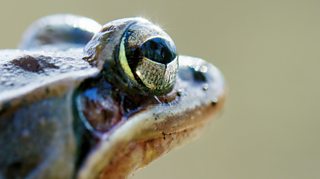
Dr Allison Sacerdote-Velat, Herpetologist at Chicago Academy of Sciences, explains how glucose in the frog's body acts as a natural anti-freeze: "They're using that as a cryoprotectant so ice crystals don't actually form within the cells and within the organs."
There's a growing field in medicine called cryo-preservation: the process of preserving cells, tissues or organs by cooling them to very low, or freezing, temperatures. This gives surgeons more time during operations. Now, researchers are looking at ways to entirely freeze organs so that they can be stored, long-term. "They're taking the approach of slowly lowering the temperature like wood frogs do, and using glucose or glycerol to try to build-up that cryoprotective capability so damage to the organ is reduced," says Allison.
If you take cryopreservation to the extreme, you get to the slightly sci-fi world of cryonics. The practice of cryo-preserving the whole body – immediately upon point of death – in the hope that future medicine can bring it back to life. "We have a very long way to go before we’re at a point where we could contemplate doing this with an entire person, but there's certainly the determination," says Allison.
Maybe the North American wood frog will help us crack the code for how to bring bodies back from the cold.
To find out more listen to the full episode on frozen frogs here.
Listen to the whole series of Naturebang and let the weirdness of the natural world seep in.
The information contained in this article was correct at the time of broadcast on 13 January 2023.

More articles from Radio 4
-
![]()
Ants are better at socially distancing than us
If you want to know how best to survive the pandemic, why not take some tips from the experts?
-
![]()
Is your cat making you a bad driver?
How a mysterious cat-borne parasite might be affecting your brain.
-
![]()
Seven marvellous animals weβll never see again
Rob Newman tells the stories of five once thriving animals now wiped from the planet, in The Extinction Tapes.
-
![]()
Why we should all be taking cold showers
Dr Michael Mosley takes a chilly dive to find out how it could help your mood, brain, immune system and heart.

